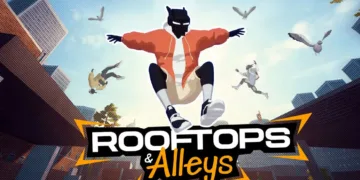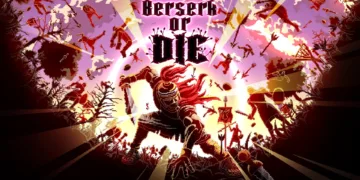Chip and Joanna Gaines have built an empire on making the past look pretty—all shiplap and farmhouse sinks. Their latest venture, “Back to the Frontier,” strips away the Instagram filter and drops three unsuspecting families into the kind of 1880s homestead where Pinterest boards go to die. Executive produced for Magnolia Network and Max, this eight-week endurance test transplants modern families to the Canadian Rockies, where the only thing connecting them to civilization is narrator William Hope’s folksy voice-over.
No electricity, no running water, no indoor plumbing—just dilapidated cabins that make a fixer-upper look like a five-star resort. The families must prove their homestead viability through farming, construction, and animal husbandry, armed with nothing but period-appropriate tools and rapidly diminishing patience. It’s “Little House on the Prairie” meets “Survivor,” except the immunity idol is a working outhouse and the prize is not dying of dysentery.
The Pioneers (And Their Discontents)
The casting director deserves hazard pay for assembling this particular group of digital refugees. The Lopers, a multigenerational Black family from Alabama, arrive with Stacey leading the charge—a career woman whose first encounter with the outhouse produces tears that could water their wheat crop.
Her husband Joaquin approaches the challenge with admirable stoicism, while their two sons (ages 12 and 14) discover that Xbox skills don’t translate to ox-handling. The family’s secret weapon is Joaquin’s mother Shirley, whose farm experience makes her the homestead’s unofficial survival guru and the only person who doesn’t treat a wood-burning stove like alien technology.
From Texas comes the Hanna-Riggs clan: Jason and Joe, two tech-obsessed dads experiencing withdrawal symptoms from their smart home ecosystem, accompanied by their 10-year-old twins who view manual labor as a form of child abuse. Their struggles with physical demands provide some of the show’s most genuine moments, as modern parenting philosophy collides with frontier necessity.
The Halls from Florida round out the cast with Lina, a business owner, and Jereme, whose rugged individualism quickly earns him the series’ villain crown. Their teenage daughters mourn the loss of selfie opportunities while their 11-year-old son adapts with the resilience only children possess.
The family dynamics create the show’s most compelling narrative threads. Stacey’s emotional journey from tearful resistance to grudging acceptance feels authentic, while Shirley’s gentle guidance provides both practical wisdom and emotional grounding. The children’s technology withdrawal symptoms range from amusing to genuinely affecting, particularly when simple discoveries—like the Hall girls finding a hand mirror—become cause for celebration.
Playing Pioneer (With Safety Nets)
The show’s greatest strength lies in its physical challenges, which feel genuinely difficult without crossing into sadistic territory. Plowing fields by hand, harvesting wheat, managing livestock, and cooking meals on temperamental stoves create real stakes that can’t be solved with a quick Google search. The production smartly includes historian Dr. Jacob K. Friefeld and homestead influencer Melissa K. Norris to provide historical context, though their appearances feel more like educational pit stops than integrated storytelling elements.
The artificial elements reveal both the show’s ambitions and its limitations. Mock land office validations and livestock auctions add game-show structure to the historical simulation, while a conveniently placed general store ensures no family actually starves. The Canadian setting allows for agricultural timelines that wouldn’t work in the American frontier, and some tools receive modern upgrades that would make actual homesteaders weep with envy.
What emerges is a sanitized version of frontier life that acknowledges hardship without embracing genuine danger. The families are clearly middle to upper-middle class—their 21st-century equivalents wouldn’t have needed to trek west for land in the first place. This class disconnect creates an interesting tension: we’re watching people voluntarily experience poverty conditions while knowing their real lives include multiple bathrooms and housekeepers.
The show dances around some harsh historical realities, particularly regarding reproductive health and the grinding poverty that drove actual homesteading. Traditional gender roles receive lip service, though the Hanna-Riggs family subverts expectations by negotiating tasks based on skill rather than societal expectations. Community cooperation becomes a central theme, with Jereme Hall’s resistance to group activities providing the series’ primary interpersonal conflict.
Survival of the Fittest (And Most Telegenic)
“Back to the Frontier” succeeds as comfort food television—challenging enough to feel meaningful, safe enough for family viewing. The genuine family struggles and children’s surprising adaptability create emotional investment without requiring viewer therapy afterward. Unlike more extreme survival shows, this series focuses on character development through adversity rather than manufacturing drama through starvation or interpersonal warfare.
The show’s educational value remains limited compared to predecessors like PBS’s “Frontier House,” but it effectively highlights modern dependencies on technology and convenience. The diverse casting—including a Black family and same-sex couple—feels natural rather than performative, while the children often demonstrate more resilience than their parents, creating intergenerational dynamics that feel fresh.
The entertainment factor hovers somewhere between “Fixer Upper” and “Naked and Afraid”—less polished than HGTV’s usual fare, less brutal than survival programming. This middle ground serves the Magnolia Network brand well, offering viewers a chance to feel superior to struggling families while maintaining enough difficulty to respect the participants’ efforts.
The show works best for audiences seeking family-friendly reality programming with educational pretensions. It’s comfort television for people who romanticize simpler times without wanting to actually experience them. The real question isn’t whether these families can survive eight weeks of frontier life—it’s whether viewers can survive eight weeks of watching privileged people discover that living without Wi-Fi is hard.
Back to the Frontier is a new reality TV series that premiered on July 10, 2025. This eight-part series is available to watch on HBO Max and Magnolia Network.
Full Credits
Director: Christian Aldridge, Janet Morhart, Tom Deverell
Producers and Executive Producers: Chip Gaines, Joanna Gaines, Michael Fraser, Allison Page
The Review
Back to the Frontier
"Back to the Frontier" delivers exactly what Magnolia Network promises: sanitized hardship with genuine heart. While it lacks the educational depth of superior historical reality shows, the authentic family dynamics and children's surprising resilience create engaging television. It's frontier life with training wheels—safe enough for primetime, challenging enough to feel meaningful. The Gaineses have crafted comfort food TV that satisfies without nourishing.
PROS
- Authentic family emotional journeys
- Diverse, well-cast families
- Children's adaptability provides genuine surprises
- Physical challenges feel genuinely difficult
- Family-friendly viewing without manufactured drama
CONS
- Sanitized version of historical reality
- Low stakes undermine tension
- Limited educational value
- Class disconnect feels artificial
- Some reactions seem obvious or predictable
















































